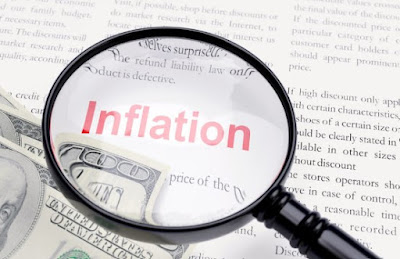 The thinness of the order-driven capital markets is making price action that seems more inexplicable than usual. The US dollar is mixed. It has recouped all the ground it lows against the euro yesterday, as the single currency briefly dipped below $1.09 in the North American morning. It was unable to build on yesterday's gains that had carried it up to almost $1.0950. Despite some fraying, the $1.08-$1.10 trading range still seems intact.
The thinness of the order-driven capital markets is making price action that seems more inexplicable than usual. The US dollar is mixed. It has recouped all the ground it lows against the euro yesterday, as the single currency briefly dipped below $1.09 in the North American morning. It was unable to build on yesterday's gains that had carried it up to almost $1.0950. Despite some fraying, the $1.08-$1.10 trading range still seems intact. Sterling which had been sold to eight-month lows at almost $1.48 has bounced to $1.49 despite more concerns after Q3 GDP was revised lower (2.1% year-over-year from 2.3%) that growth is fading. The decline in tax receipts that is producing the deficit-overshoot (discussed here yesterday).
There is a bit of a role reversal within the dollar-bloc. The Australian and New Zealand dollar's are seeing gains over the past couple of sessions pared while the Canadian dollar is drawing some benefit from firmer oil prices. Canada's data was disappointing, and the risk that the Bank of Canada responds with another rate hike in 2016 should rise. The US-Canadian two-year swap rate (interest rate differential) is making new multi-year highs today.
After an unexpected contraction in September (-0.5%), the Canadian economy was forecast to recover in October. Today Canada reported that October GDP was flat. Monthly GDP in Canada has been above zero only in three of the first ten months this year. The year-over-year contraction of 0.2% was also more than the market expected and is the weakest figure since 2009. October retail sales also disappointed. The 0.1% increase was supposed to have been 0.4%. Excluding autos, retail sales were flat. The smaller than initially reported decline in September retail sales is insufficient to allay concerns about the Canadian economy.
The Canadian dollar was off more than 4% this month coming into today's session. The push of the US dollar below CAD1.39 for the first time this week appeared to have triggered stops and some initial follow-through selling. This is more about positions and thin markets than a fundamental reassessment of the two key drivers of the Canadian dollar oil prices and interest rate differential with the US.
The US data was nothing to write home about. November personal income was a tad stronger than expecting, rising 0.3%. This matches the three-month average but is off slightly from the 0.4% average monthly gain over the past six and 12 months. Personal consumption expenditures did pick up to 0.3% from a flat reading in October (revised from 0.1%). What is interesting, especially in light of the durable good orders report, is the household demand for durable goods (cars and appliances) rose a strong 1.1% in November. The composition may be different, but the US economy appears to be growing around 2% here in Q4, which is roughly what many economists estimate as trend growth.
Separately, US new home sales rose twice what was expected (4.3% vs. 2.0%), but following the significant revision to October series ( from 10.7% to 6.3%), the actually number of new home sales was below expectations. The help of the drop in gasoline prices may have helped lift the University of Michigan's consumer confidence, but it did not have much impact on inflation expectations, which remained at 2.6% for both the short and long terms.
The yen remains sidelined. After the big recovery following the BOJ announcement last week, the dollar has been confined to a 3/4 of a yen range this week between roughly JPY120.75 and JPY121.50. Rising US yields and equities would seem to favor a stronger greenback recovery, but technical factors warn that a low may not be in place.
Spanish politics remains unresolved, but Spanish assets are beginning to perform better. Spanish equities are matching the region's gains today. The long-end of the bond market is underperforming a little, but the short-end of the coupon curve has a bid. More negotiations are scheduled into next week. It remains difficult to see how a majority government will be formed. A minority PP-led government is possible, but Rajoy likely will not be able to lead it, and concessions to the Socialists, in terms key posts in parliament will be required. Such a scenario is not imminent. Many seemingly blind alleys will be have to be explored first.
The lines are being drawn in Greece. Since the summer's fiasco, drama has been kept to a minimum, but this may end over the couple of weeks. The pension reform that Prime Minister Tsipras has backed, which rejects fresh cuts to main pensions is likely to bring it to fresh loggerheads with the official creditors. This comes just as the EU and ECB are beginning to consider debt relief for Greece. Ironically, this is one of the conditions for the IMF involvement, which Tsipras opposes.
Tags: Bank of Canada







































